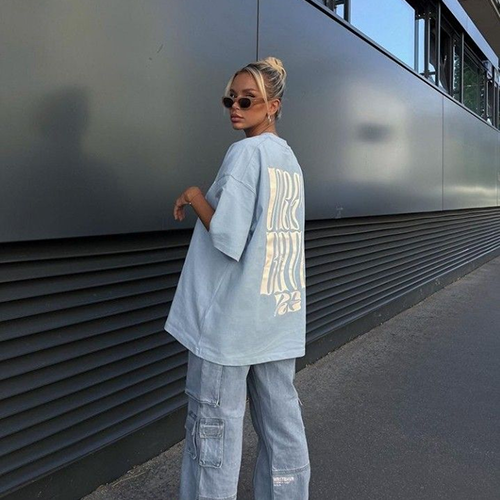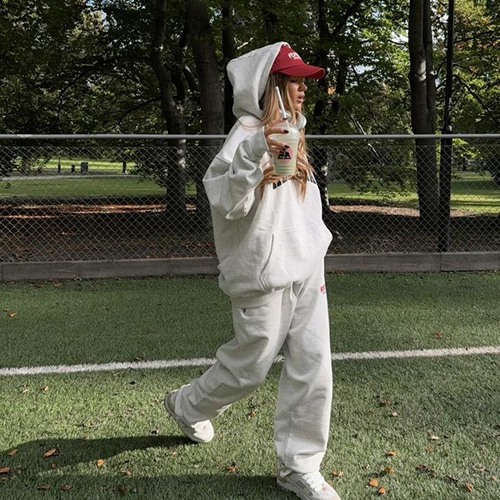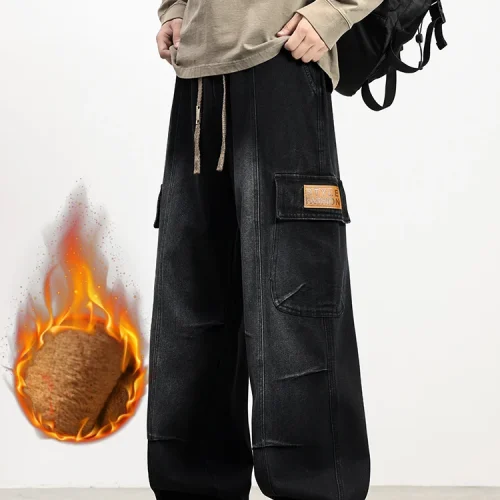There’s something poetic about a garment so simple it can define an entire lifestyle.
The T-shirt — plain, quiet, and endlessly adaptable — has evolved far beyond fashion. It’s now a reflection of how we live, what we value, and who we are when no one’s watching.
For decades, the T-shirt has moved through different identities: military gear, workwear, rebellion, pop culture, streetwear. But in 2025, it represents something new — effortless intentionality.
The idea that looking good and feeling comfortable don’t have to be opposites.
1. From Undergarment to Everyday Icon
The modern T-shirt traces its origins to practicality.
Early 20th-century workers and soldiers wore it beneath uniforms. It wasn’t meant to be seen — until it was.
The 1950s changed everything.
Marlon Brando, bare-armed and brooding, turned a simple white tee into a weapon of charisma. James Dean made it a statement of rebellion. Then came the cultural snowball: the 60s brought slogans, the 70s brought bands, the 80s brought brands, and the 90s brought subcultures.
By the 2000s, the T-shirt was no longer an accessory to style.
It was style.
2. The Aesthetics of Ease
Modern fashion has reached an inflection point.
After years of maximalism, logomania, and trend-chasing, we’ve entered an age of subtlety — a return to ease.
The T-shirt sits at the heart of this movement.
It’s the piece that lets you dress with intention without trying too hard.
The rise of “quiet luxury” and “capsule wardrobes” has only reaffirmed its position. The perfect tee — soft, structured, timeless — is the new status symbol.
Not because of its price tag, but because of what it communicates: clarity.
3. Anatomy of the Perfect Tee
To the untrained eye, every T-shirt looks the same. But the details are everything.
A true modern tee balances comfort and architecture.
The neckline sits close but never constricts. The shoulder seam follows the natural line of the body. The sleeves fall with measured ease. The fabric moves like air yet holds its shape through countless washes.
These invisible decisions separate a tee that’s “nice” from one that’s essential.
Brands like Trendytroop have redefined this craftsmanship — working with weighted cotton, organic blends, and precision tailoring that transforms the simplest garment into the most personal one.
The T-shirt, in its best form, is quiet engineering.
4. The Tee as Emotional Memory
Ask someone about their favorite T-shirt, and they won’t tell you about thread count.
They’ll tell you a story.
It’s the shirt from that unforgettable road trip.
The one you slept in after your first heartbreak.
The one that fits a little differently now, but you can’t let go.
The T-shirt has always existed where style meets sentiment.
It’s not just what we wear — it’s what we live in.
Clothing psychologists call this emotional durability — the idea that the garments we form memories in become extensions of identity.
That’s why the T-shirt will never be just cotton. It’s time, stitched together.
5. The T-Shirt as Modern Uniform
The world has shifted toward informality — not as laziness, but as liberation.
Work-from-anywhere culture, creative entrepreneurship, and digital nomadism have redefined what it means to “dress up.”
Enter: the T-shirt.
It’s now the modern uniform — the common ground between professionalism and personality.
You’ll see it paired with tailored trousers, under blazers, or beside sneakers and silver jewelry.
It adapts, quietly, to every lifestyle.
The new power move isn’t the three-piece suit.
It’s a crisp, heavyweight white tee — worn with intention.
6. Sustainability as a Mindset
The T-shirt sits at the center of the sustainability conversation.
It’s the most mass-produced garment on the planet — which also makes it the most symbolic of change.
Brands are rethinking everything:
- Organic and regenerative cotton.
- Recycled poly-blends.
- Waterless dyeing and circular manufacturing.
But sustainability is also philosophical.
The most ethical tee is the one you wear a hundred times — not the one you replace every season.
Modern minimalism isn’t about having less.
It’s about choosing better.
7. The Power of the Blank Canvas
The blank T-shirt is fashion’s purest form of expression.
It’s democratic — it belongs to no class, no gender, no age.
And it’s personal — how you style it tells the story.
Layered under a denim jacket, tucked into tailored trousers, oversized with cargo pants, cropped with high-waisted skirts — each version says something different.
The tee adapts to its wearer the way a journal adapts to its writer.
That’s the secret to its longevity: the T-shirt is never static. It becomes who you are.
8. The Cultural Currency of Simplicity
In a hyper-digital world, simplicity is rebellion.
When everyone’s chasing algorithms, the person in a clean white tee stands out — not because of extravagance, but because of authenticity.
Simplicity signals confidence.
It says, I don’t need to prove anything.
This is why tech founders, creatives, and thought leaders — from Steve Jobs to Virgil Abloh — have turned the T-shirt into a form of identity branding.
It’s the rejection of excess in favor of essence.
9. The Tee as a Tool of Soft Power
Unlike a luxury bag or designer shoe, the T-shirt doesn’t command — it connects.
It bridges communities, movements, and generations.
From punk rebellion to feminist protest to climate activism, the tee has always carried messages stronger than its seams.
It’s the softest weapon fashion ever made — one that changes minds not through noise, but through presence.
When you wear a statement tee today, you’re not just wearing words. You’re wearing history — and hope.
10. Craft, Cut, and Conscious Design
The modern T-shirt’s strength lies in its restraint.
Designers are approaching it like architecture — understanding how weight, density, and drape influence mood.
A structured tee feels assertive. A loose one feels introspective.
A cropped silhouette can feel free-spirited; a fitted cut, refined.
Fabric, meanwhile, has evolved from simple cotton to bamboo blends, recycled jersey, and even lab-grown cellulose.
Every thread carries intention.
This new era of design proves that even the simplest garment deserves the most thoughtful execution.
11. The Lifestyle Shift
The pandemic redefined comfort.
And in its wake, the T-shirt became the symbol of balance — between work and rest, discipline and softness.
People don’t want wardrobes that restrict them anymore.
They want clothes that move with their lives.
That’s why the modern T-shirt lives everywhere:
- In coffee shops and co-working spaces.
- On flights and in home offices.
- At brunch tables and evening walks.
It’s the connective fabric of the new lifestyle — casual but intentional, soft but strong.
12. The Future of the T-Shirt
As technology reshapes fashion, the T-shirt will evolve — not in essence, but in function.
Imagine tees with built-in UV resistance, temperature control fibers, or digital identifiers for transparency and resale.
But beyond innovation, the T-shirt’s power lies in permanence.
No matter how advanced clothing becomes, the tee will always be the foundation — the piece we return to when trends collapse.
Because the future of fashion isn’t about what’s next.
It’s about what lasts.
13. Conclusion: The Soul of Simplicity
In an age of endless choice, the T-shirt reminds us that less can still mean more.
It’s the thread that ties generations, styles, and identities together.
It asks for nothing but gives everything — comfort, familiarity, freedom.
The T-shirt doesn’t shout. It doesn’t compete.
It simply exists — and that’s its greatest strength.
As minimalism becomes the new luxury, and authenticity the new aspiration, one truth remains:
You’ll never go wrong in a good T-shirt.








